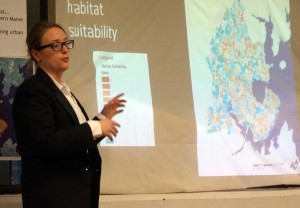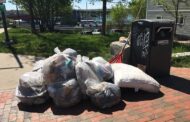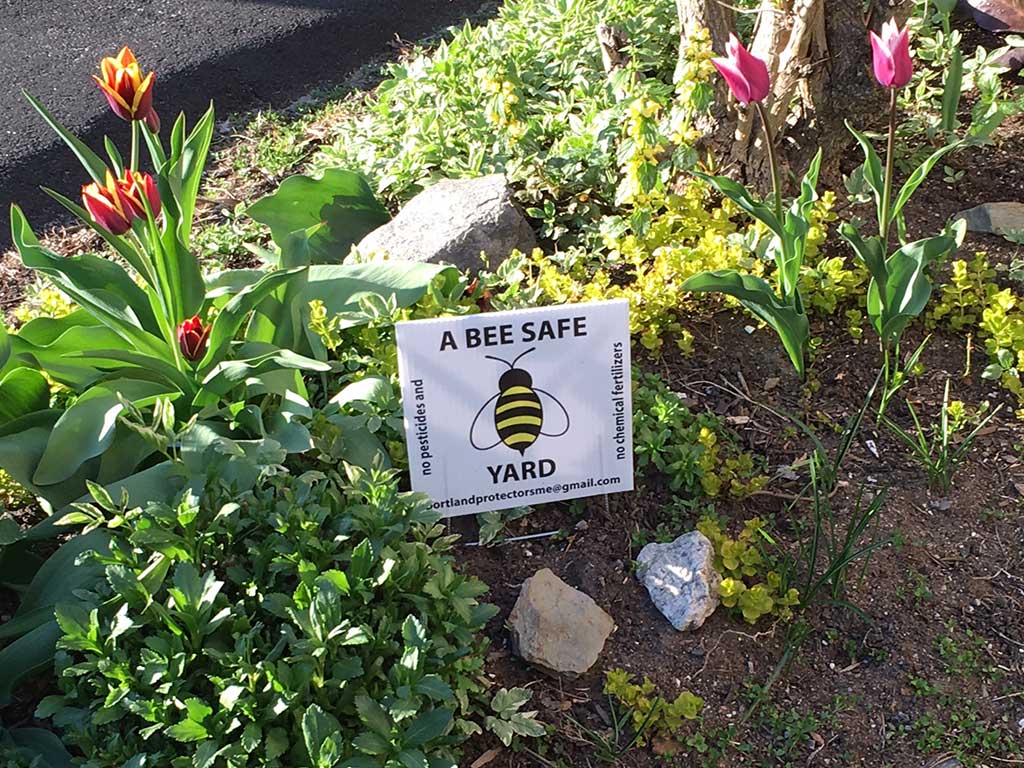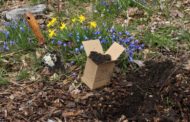There is 26 square miles of roads, driveways, parking lots, roofs and other impervious surfaces in Portland. To a bumblebee or other native pollinator that is barren and useless land.
But there is also 57 square miles of pervious surface: parks, fields, backyards, front lawns, grassy median strips, and so forth.
It is the hope of the nonprofit The Wild Seeds Project to work with the City and its residents to plant as much of that pervious area as possible with native plants.
To that end The Wild Seeds Project recruited graduate students from the Conway School of Landscape Design in Massachusetts to map the pervious area of Portland as part of a larger community effort to create pollinator corridors through the city.
Think of a pollinator corridor as a roadway for bees and other pollinators to travel through the City. By planting native species, instituting low mow areas, creating community gardens, and reducing pesticide use, Portland can become a sustainable habitat for pollinators.
“Anywhere there is bare dirt or open space, native plants will thrive,” said Heather McCargo, director of The Wild Seed Project.
If just five percent of the City’s pervious area was revitalized that would equal three square miles of pollinator habitat. That is 1900 acres, about the size of the Basin Preserve in Phippsburg, for comparison.
The Conway students, Beth Batchelder, Molly Burhans, and Cary White are mapping zones to focus pollinator corridor efforts. Their goals are to conserve species, help manage storm water, reduce the heat island effect, and increase the productivity and resilience of urban agriculture.
The effort will require support from the City, action from the residents, and a public-private partnership the likes of which is not easy to pull together. Policy changes will be helpful, but so will education.
“Education could move faster than city policy,” noted Conway student Beth Batchelder.






